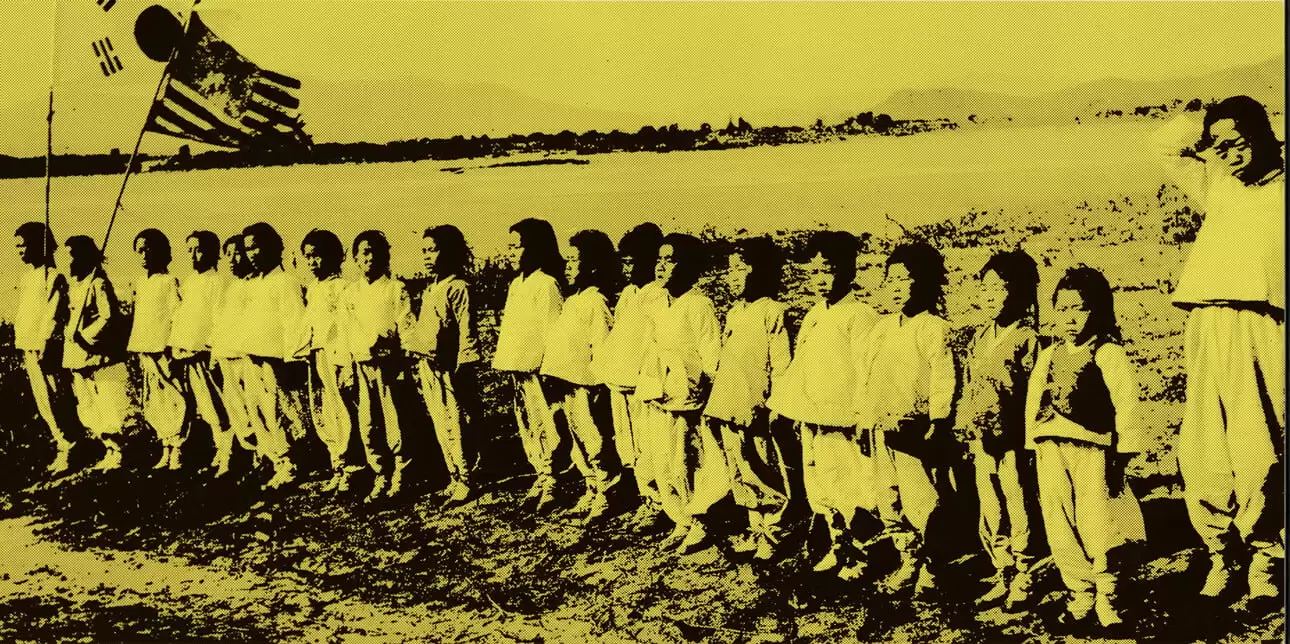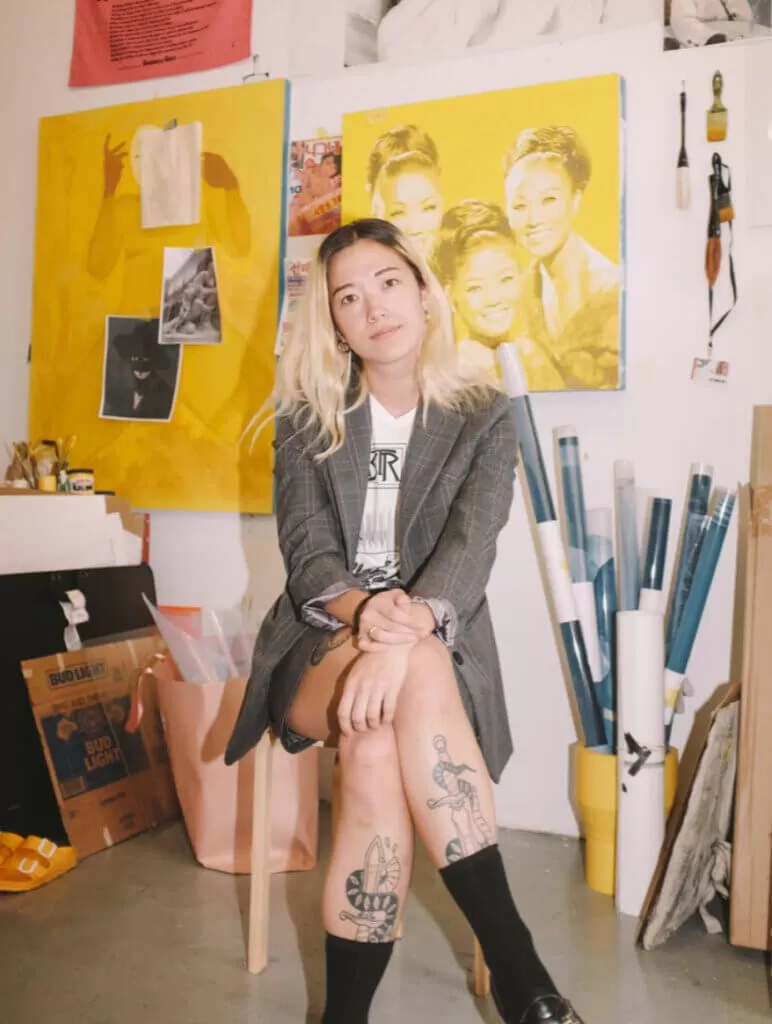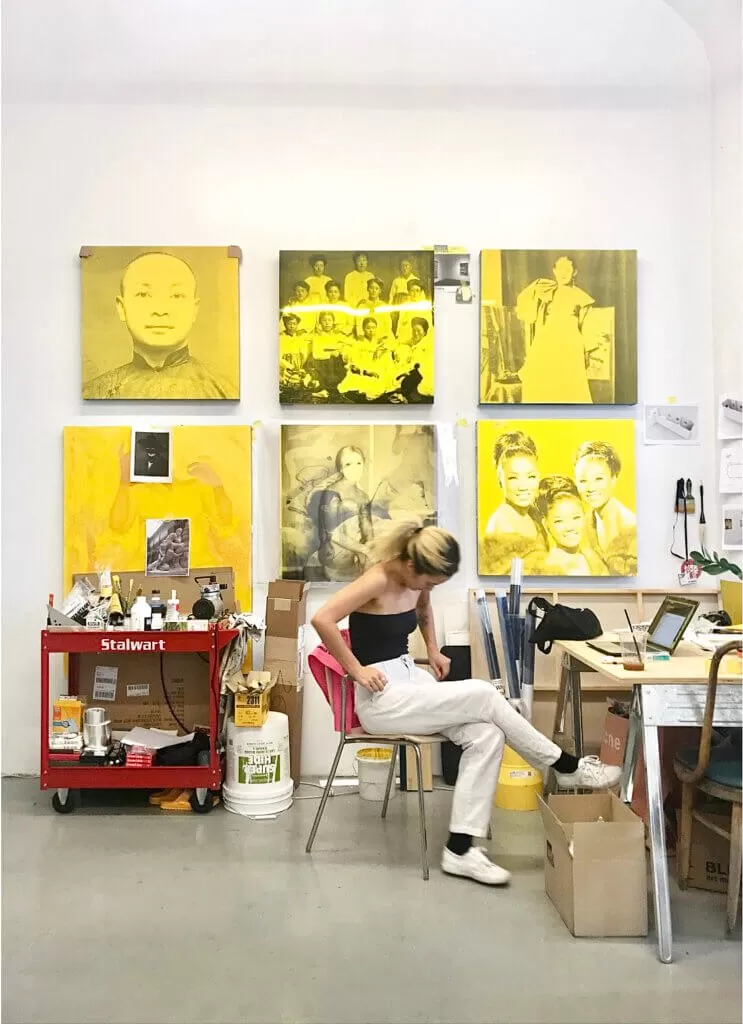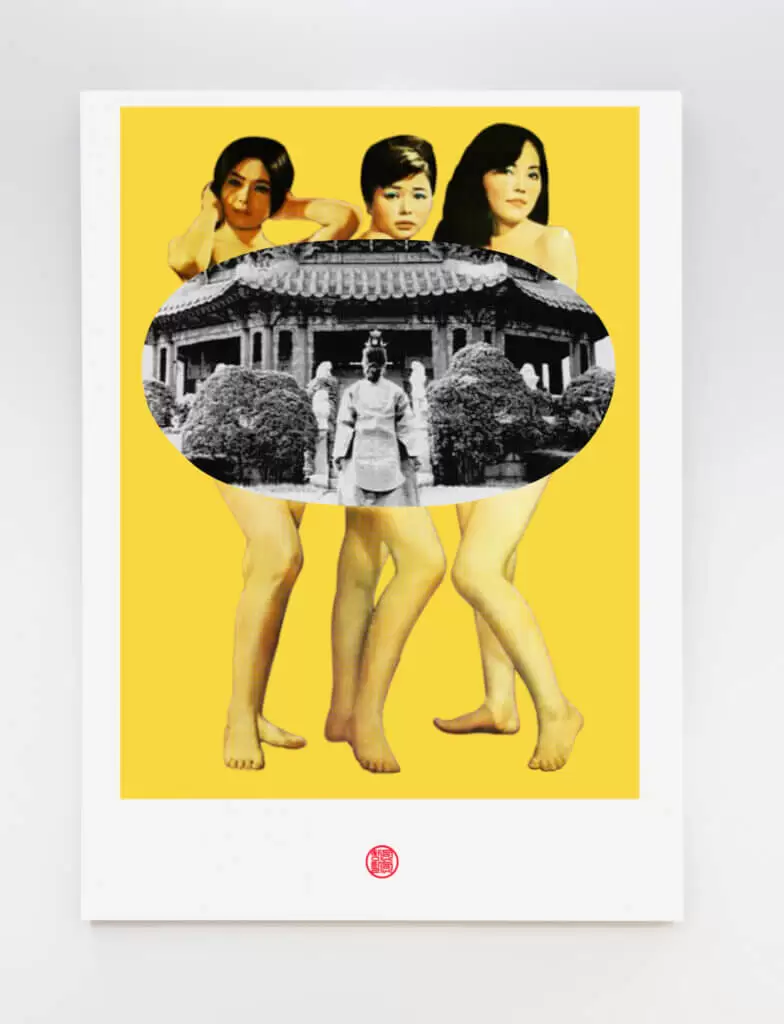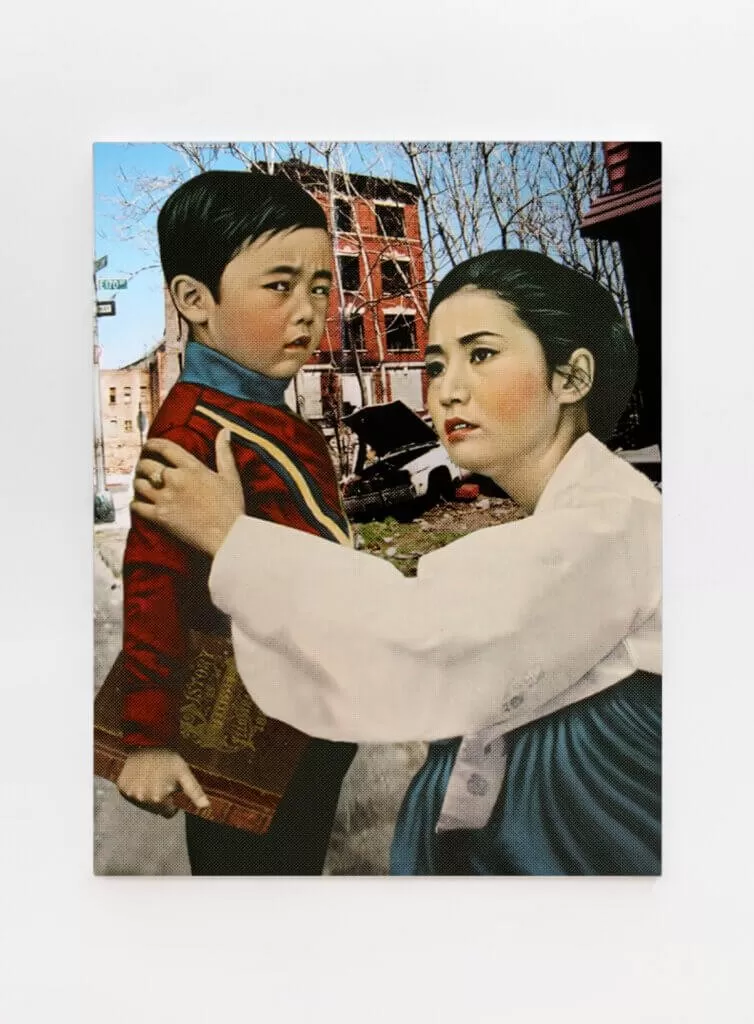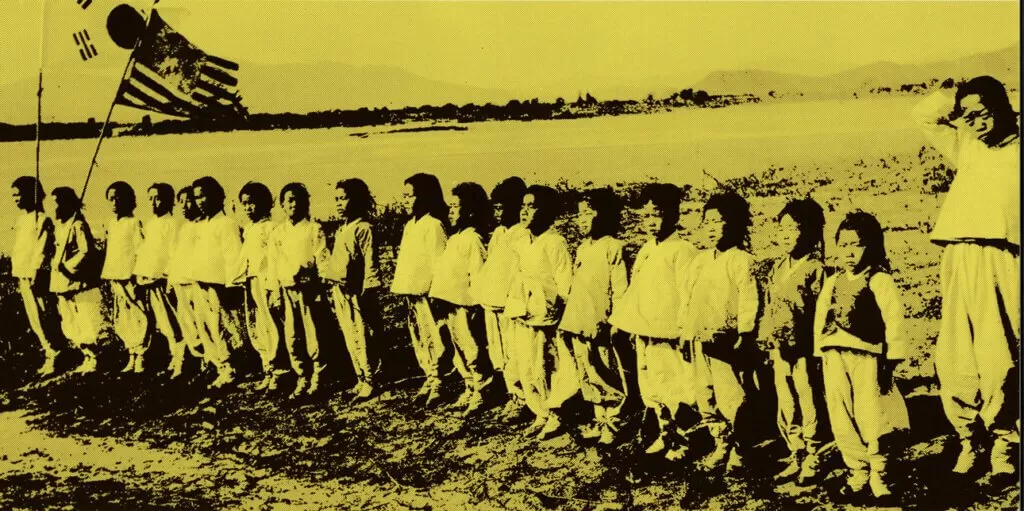Known as the land of opportunity, America declares anybody can achieve ‘The American Dream’ and all things that come with it, the success, the wealth, social inclusion and ultimately the respect. Yet, the legacy of the Asian American experience tells a different story that is plagued with inequality, racism and exclusion reinforced by microaggressions and harsh criticisms that imply their situation as conditioned residents in America.
I want to provide representation for Asian-Americans, which is why I do what I do because I am an artist at the end of the day
Insil Jang
The legacy and the future of the Asian American experience is a crucial subject for New York-based artist Insil Jang as she examines her subject matter through the medium of screenprinting and painting.
Jang manipulates historical imagery to create a thought-provoking aesthetic fused with Halftones and acrylic paints, revealing her story to represent her Asian experience in modern America accurately. Her work is a compilation of consequences plucked from the unsettling and unnatural anguish of Asian existence in America.
Currently her work is on display at New York’s Launch F18 viewing rooms titled A Hyphenated Identity. We managed to speak with the emerging artist about her creative process, inspiration and more.
Q: For those who don’t know you, can you please introduce yourself?
Insil Jang: My name is Insil Jang, and I’m a 27-year-old Brooklyn-based, hyphenated American and an interdisciplinary artist with an emphasis on painting and printmaking. I graduated from the School of the Art Institute of Chicago in 2016, where I developed my interest in printmaking.
I was raised as a military child and have lived in several places around the world before ending up in mid-Western America. Growing up with that experience has helped form me as an Asian-American, but it has also given me the purpose to express the Asian-American experience in America.
I’m a master printer, so I’m attracted to apparent structure in contemporary art, and I tend to stray away from anything remotely resembling abstract expressionism!
Q: What is your inspiration, and why do you do what you do?
Insil Jang: My background and personal experiences inspire me. For example, in my formative years, I discovered a considerable lack of representation and familiarity in western and neoclassical art history.
It may be a stretch to say that I want to provide representation for Asian-Americans, which is why I do what I do because I am an artist at the end of the day. I could never be doing anything other than letting my creative self express itself through art. But I do think that I must inform and portray what it is like to be Asian-American in the US.
The Bauhaus movement and the Black Mountain College philosophy of art is where I find my artistic inspiration. But, in all honesty, I try to find inspiration closer to my heart – in the images I remember growing up, Korean culture, cuisine, and especially the 50’s cinema of Korea.
Q: Can you tell us about your creative process?
Insil Jang: Each painting starts differently, but if I had to break it down for you, I’d say my creative process usually begins with extensive reading and research. Based on what I’ve read, I start digging into academic archives for historical images. Sometimes the process starts in the opposite direction.
It can start from images I’ve collected over the years leading into research – I like to be well informed before drawing out what I want my next piece to look like. This way, I’m conscious of how I feel about specific imagery based on the reading I have done, and I am then able to project that feeling into the artwork in different ways.
I like to think that all my pieces interact with each other – not in any gimmicky way but in a narrative and aesthetic way. For example, many elements in my work include halftones, CMYK and colour theory. These develop from experimenting with various digital imaging processes.
Now to the hard work! After an initial drawing is made, I dissect and cut up the drawings. I mainly use Adobe Creative Suites to create output data for my screens. Once I’ve screen printed what I want to print, the painting begins. And in a very detailed way, I paint with mainly acrylic on top of the screen-printed area.
Q: Your work has a current theme embracing observation of human conflict and cultural norms. Can you tell us the motivation behind this?
Insil Jang: I have always been interested in the Asian-American experience in America. Throughout history, Asian Americans have confronted a long legacy of exclusion and inequity, particularly in times of crises. This has meant that Asian-Americans, and hyphenated Americans in general, have had limited access to education, jobs, to political and economic influence.
The latest example of this has been the rise in violent attacks against Asian-Americans who are unjustly blamed for causing the COVID-19 pandemic.
Since there are so few Asian-Americans in media and pop culture and the representation so lacklustre, Asian culture and Asian-American culture is in contention with Western societal norms, which forces us in many ways to make compromises in order to fit in. It’s a huge motivating factor for me to tell my story to create representation for Asian-Americans. Because a lot of modern America hasn’t got the slightest clue of where I am coming from!
For example, does the common American know how the first Koreans ended up coming to the US? It was because of the Russo-Japanese war in 1904-05 that ended up with Japan’s invasion of Korea.
A lot of Koreans had to flee the country and ended up in Hawaii, and from there became regular citizens participating in American society as railroad builders and agricultural workers.
Because this story was not told, all that the refugees experienced in America was exclusion and ridicule – and why is that? Western colonialism created unequal power structures in Asia that ingrained the idea that ‘white’ people somehow hold socioeconomic power over Asians. It is this notion that has plagued the experience of Asian-Americans ever since.
North-European immigrants to the US had always seen the Asiatic diaspora as their inferiors, and that idea is still so visible in today’s society.
Q: What was the first piece of Art you created that cemented your path as an artist?
Insil Jang: So, if you’re asking what piece cemented the path that I’m on now, I’d have to say that the dedication and enthusiasm I have for printmaking wouldn’t be so if I hadn’t started out in transferring images into limestone and copper.
The first piece I did was a self-portrait in intaglio, and from there, I gradually shifted towards working with silkscreen printing.
When I moved to New York in 2015, access to limestone and copper became scarce, and I think that I gravitated towards silkscreen because I could execute the same meticulous way of working but in a more tangible and practical way.
Early in my practice, I was mainly working in lithography and intaglio because I was inspired by the linework and gruelling process shown in many works by Rembrandt and Goya. At the time, the medium spoke to me.
Q: What is your favorite piece from your body of work, and why?
Insil Jang: ‘We were, I was, I am’ (2020) is my favourite artwork at the moment. I’m honestly very proud of all of my most recent works, but this one, in particular, stands out because the image I found in the Princeton Archive was fascinating to me.
It dates back to 1905 when Korea was being invaded by the Japanese, and the people in the photo thought the American flag would save them from Japanese imperialism -unfortunately
they most likely were not saved.
As much as I enjoy working with CMYK, I also enjoy working with the contrast between thresholds and black halftones. The halftones came out beautifully in this piece. In my opinion, simplifying the image forces the viewer to take on the imagery in a more straightforward way. And fortunately, the image did not lose any depth even though I was working with halftones which is also very satisfying for me to discover.
Q: In your opinion, what is the lasting impact of Art?
Insil Jang: What would the world look like without art? We all know that art is a direct testament to the times we live in. Still, it’s undeniable that art influences society by changing opinions, instilling values and translating experiences across space and time. Art in this sense is communication; it allows people from different cultures and different times to communicate with each other through images and stories and becomes a vehicle for social change.
I humbly hope that my artwork can help inform the viewers on Asian-American culture’s influence on American society and can be an addition to the diversity that is American culture. I hope that my workforces critical thinking about what Asian culture is, and if my work can help educate and inform, I will have succeeded.
Q: What do you think about the current state of the art world?
Insil Jang: It’s a very multifaceted question, and it is almost impossible to put into single paraphrases how I feel about the entire art world. I will say that I am pleased that we are seeing a lot of great work by, for example, African-American artists like Deana Lawson, Henry Taylor, Devan Shinoyama, and Naudline Cluvie Pierre.
In the times that we live in, narratives and stories from these artists are crucial for changing the world for the better. I still think there’s a massive lack of representation and diversity in the commercial art world. The accessibility to that part of the art business is limited for emerging artists, especially if you are an artist with a minority background.
Q: What are your thoughts on NFT art and the current NFT market boom?
Insil Jang: I am intrigued and open to the idea, but I feel there is a disconnect between the tangible element of making art and acquiring such through NFT’s. If your work isn’t good enough to be bought with regular currencies, I don’t see why cryptocurrency should be an alternative.
I went to school to learn art history and admire many masterpieces, and I don’t see how that can be translated digitally. You lose the artist’s hand when the work all becomes digital. But prove me wrong, by all means – we’ll see if this will last or if it is a boom.
We can be blunt about it; the value of the dollar is dropping. The reason people invest in alternatives is that they don’t want to lose money!
Q: What role does the artist have in society?
Insil Jang: Like writers, historians, and teachers, we play a role as educators and as messengers of testaments to the times we live in. We create beautiful objects and works out of grim and sometimes ugly realities.
We create work to give other people a better understanding of their position metaphysical as well as socially in this world by projecting themselves onto our works. Artists connect with their audience by creating familiarity between the viewer and the work. Thus we provide contact and context for people to better understand the world they live in.
Q: Lastly, what does Art mean to you?
Insil Jang: Art to me is everything; it’s all I know. I knew I wanted to do this from a very young age, and I don’t see how I could ever be happy if I were not creating art in one way or another. It’s an outlet for me and a way for me to express my legacy and history.
With my art, I reclaim my identity as an Asian-American woman who does not want to conform to Western ideals of capitalism and modern-societal norms- still hopelessly stuck in the past with stereotypical ideas of gender roles and race.
https://www.instagram.com/insiljang/
http://www.launchf18.com/viewing-room/insil-jang
©2021 Insil Jang, Launch F18


